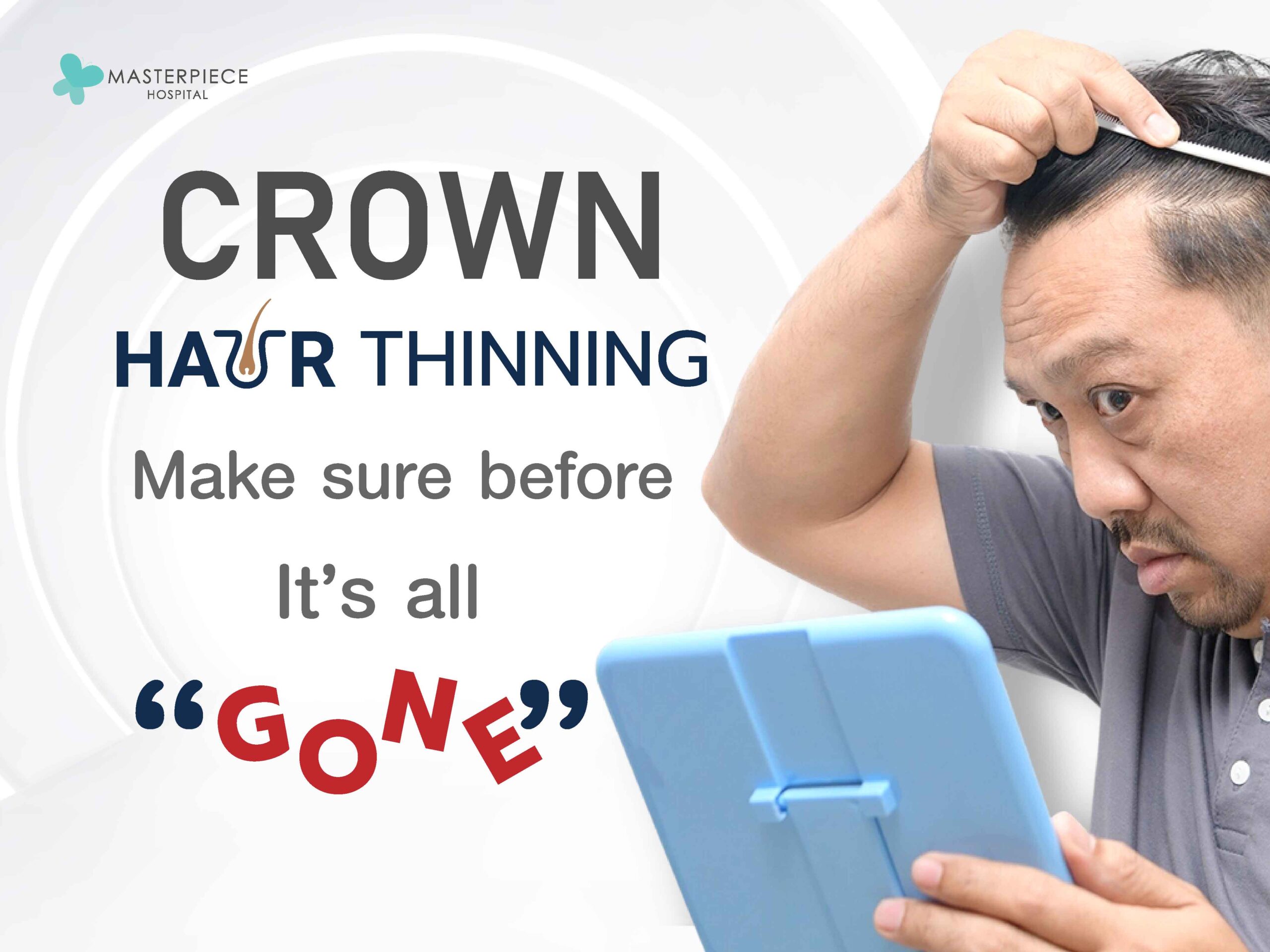Crown hair thinning? Make sure before it’s all gone.
Thinning hair
Hair loss and crown hair thinning—whether in men or women—can negatively impact one’s appearance and long-term confidence. They can also reflect unhealthy daily habits. If left untreated, they could lead to unexpected baldness. I’ve gathered valuable information to help you identify the symptoms or abnormalities early, before the hair loss becomes irreversible.
What is crown hair thinning?
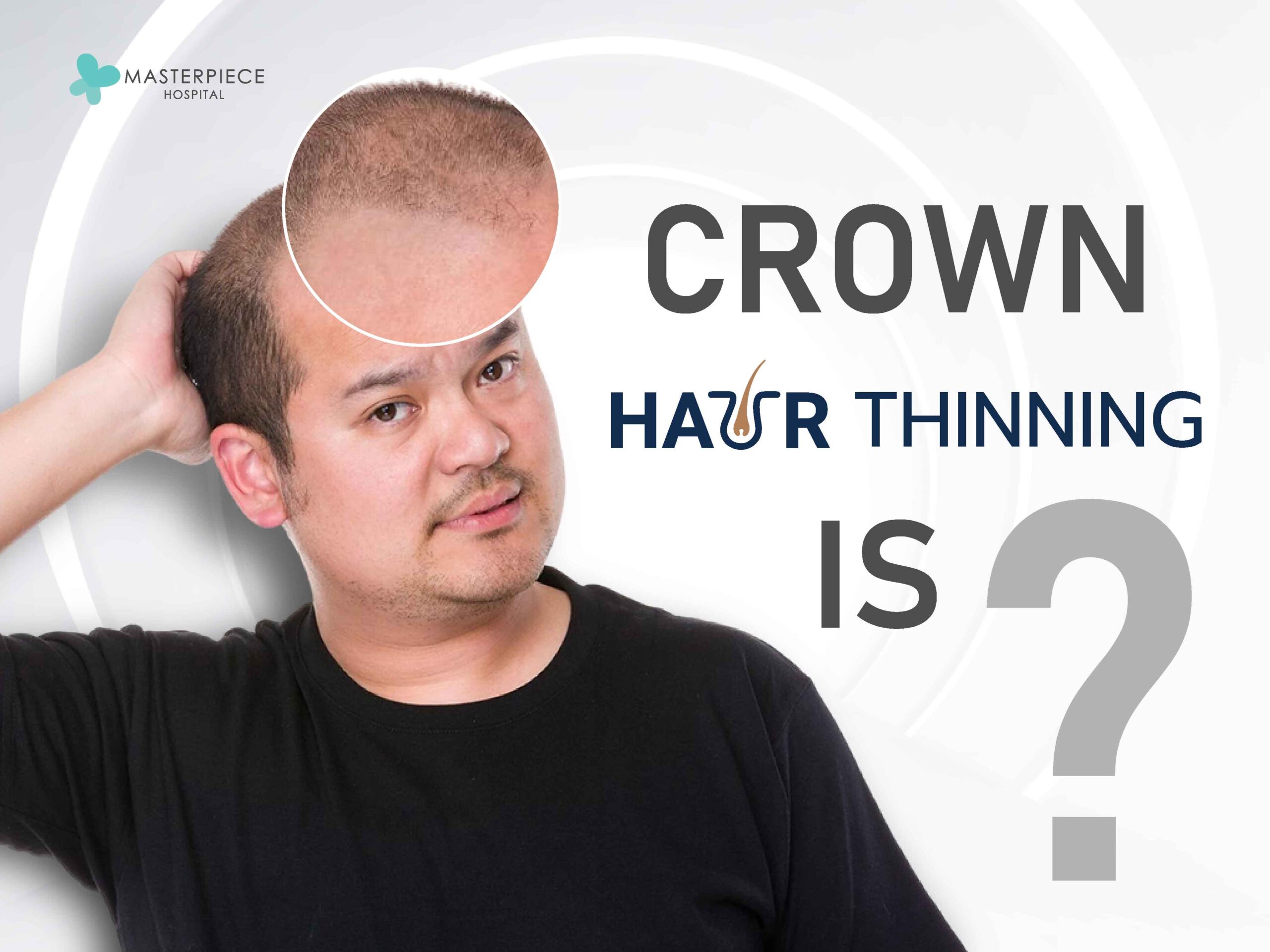
Crown hair thinning, or baldness at the top of the head, is a frustrating issue that many people overlook. Most assume it only occurs at a certain age, but in reality, crown hair thinning doesn’t discriminate. It can affect men, women, and LGBTQ individuals alike, regardless of age or lifestyle. If ignored for too long, this seemingly minor problem could eventually lead to irreversible baldness.
For those currently experiencing crown hair thinning, there’s no need to panic. Today, many ways exist to restore or treat the condition—thanks to advanced technology, innovation, medical expertise, and hair transplant surgery, which can effectively restore lost volume and bring back your hair’s original fullness.
However, it’s crucial to thoroughly research your options before making a decision. Choosing the wrong treatment or consulting an inexperienced doctor could worsen the issue, leading to more severe hair loss, accelerated baldness, or even scalp infections. To ensure safety and minimize risks, consulting directly with a qualified specialist is essential. They can accurately diagnose the problem and recommend the most suitable treatment for each case.
What causes crown hair thinning?
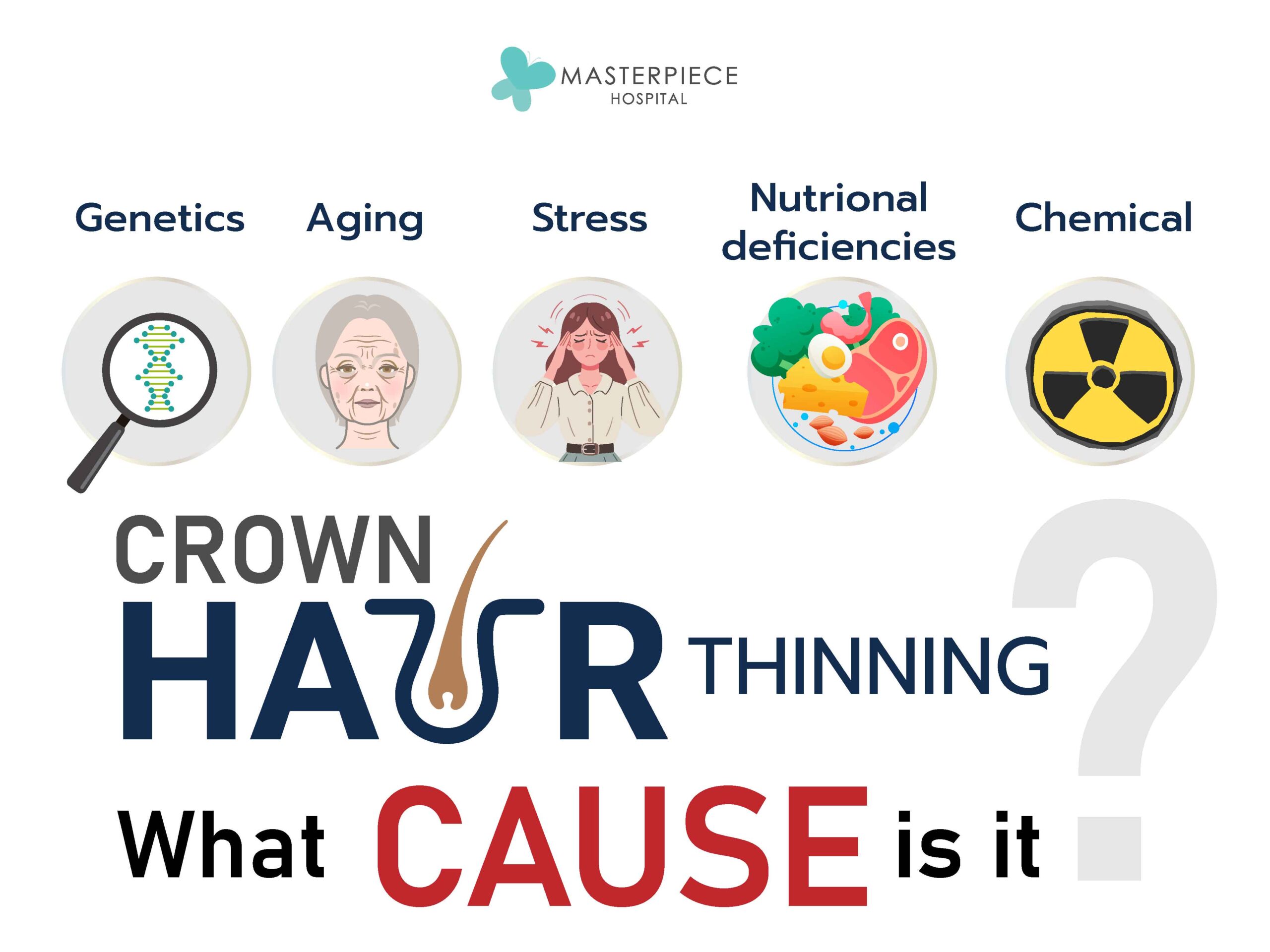
Crown hair thinning can be caused by a variety of internal and external factors. Often, frequent hair loss or rapid thinning begins with changes in personal habits. Here are the main causes of crown hair thinning:
- Genetics
For both men and women, genetic crown hair thinning often stems from a hereditary condition called Androgenetic Alopecia. This occurs when hair follicles function abnormally, leading to frequent hair loss and thinning. The most effective long-term treatment for this type of hair loss is hair transplant surgery—either FUT or FUE—performed by a qualified specialist.
- Age
Aging plays a significant role in hair thinning. As we grow older, the body’s production of sex hormones declines, which directly affects the scalp. This results in increased hair loss, thinning strands, and a noticeable reduction in hair density, often exposing the scalp more visibly.
- Stress
Stress is a commonly overlooked yet major contributor to hair thinning. When the nervous system is frequently activated, the body produces cortisol, the stress hormone, which weakens hair strands. In some cases, stress may even lead to unconscious hair-pulling. These behaviors can accelerate the thinning process significantly.
- Nutritional Deficiencies
Nutrients and minerals such as vitamin A, B vitamins, and protein are essential for strengthening hair and maintaining a healthy scalp. A lack of these nutrients can weaken the hair, making it brittle and prone to falling out.
- Overuse of Chemicals on the Scalp
Frequent use of chemical or synthetic substances—found in shampoos, conditioners, hair dyes, or styling products—can damage the scalp, especially if the products are unsuitable for your scalp type. Overuse can weaken the hair follicles, leading to inflammation and hair loss.
Understanding these causes is the first step to finding the right treatment and preventing further damage.
How does crown hair thinning differ between men and women?
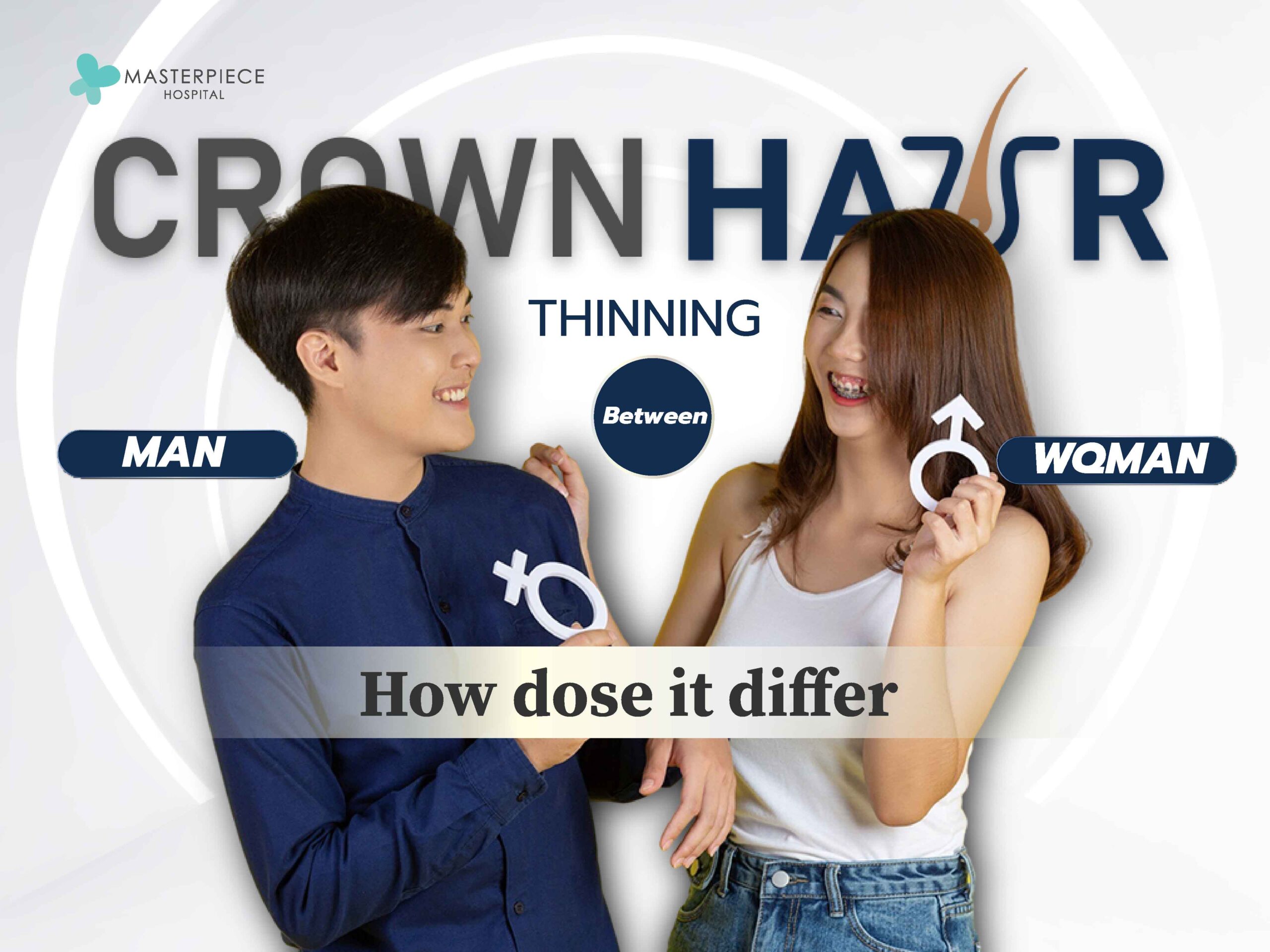
Crown hair thinning can affect both men and women, but the way it presents often differs, which leads many patients to wonder whether the treatment approach can be the same for both. To clear up this question, let’s take a closer look at how crown hair thinning differs between men and women.
- Crown Hair Thinning in Men
In men, crown hair thinning is usually caused by multiple factors, ranging from poor scalp care to allergic reactions that affect the scalp. If left untreated, the condition can worsen, leading to widespread baldness that’s more visibly pronounced, especially at the crown.
- Crown Hair Thinning in Women
In women, crown hair thinning often stems from similar causes but is more commonly linked to chemical exposure. The use of harsh hair products—like unsuitable shampoos, conditioners, or chemical treatments—can weaken hair strands and damage the scalp, leading to significant hair loss and, eventually, visible thinning or bald spots.
As you can see, while both men and women can experience crown hair thinning, the root causes often differ based on individual behaviors and daily hair care routines. Fortunately, both conditions are treatable through hair transplant surgery. A specialist will assess the specific cause and recommend the most appropriate technique to ensure effective, natural-looking results tailored to each patient.
Simple ways to prevent baldness on your own

Hair loss and crown hair thinning may seem like minor issues to many, but if left untreated over time, these small problems can become serious. Not only can they cause a loss of confidence in one’s appearance, but they can also lead to clearly visible bald spots. To reduce these risks, here are some simple prevention tips you can do on your own:
- Brush hair properly: Avoid brushing too hard or brushing while hair is wet, as this can cause hair breakage.
- Wash hair correctly: Regular shampooing removes dust and dirt, helping reduce hair loss and problems caused by dandruff or scalp fungus.
- Use herbal treatments: Herbal remedies can help reduce hair loss and strengthen hair, but use them in appropriate amounts to avoid side effects.
- Choose suitable hair products: Using the right shampoo, conditioner, and hair serums can promote thicker, stronger hair.
- Eat nutritious food: Adequate intake of minerals, vitamins, and protein helps strengthen hair and prevent hair loss.
- Tie hair properly: Avoid tying hair too tightly, as this can cause hair to break and fall out. Using fabric hair ties instead of rubber bands is recommended to reduce hair loss.
- Take care of mental health: Stress, depression, and frequent anxiety often contribute to hair loss, so maintaining good mental health can help prevent it.
Medical Treatments for Crown Hair Thinning
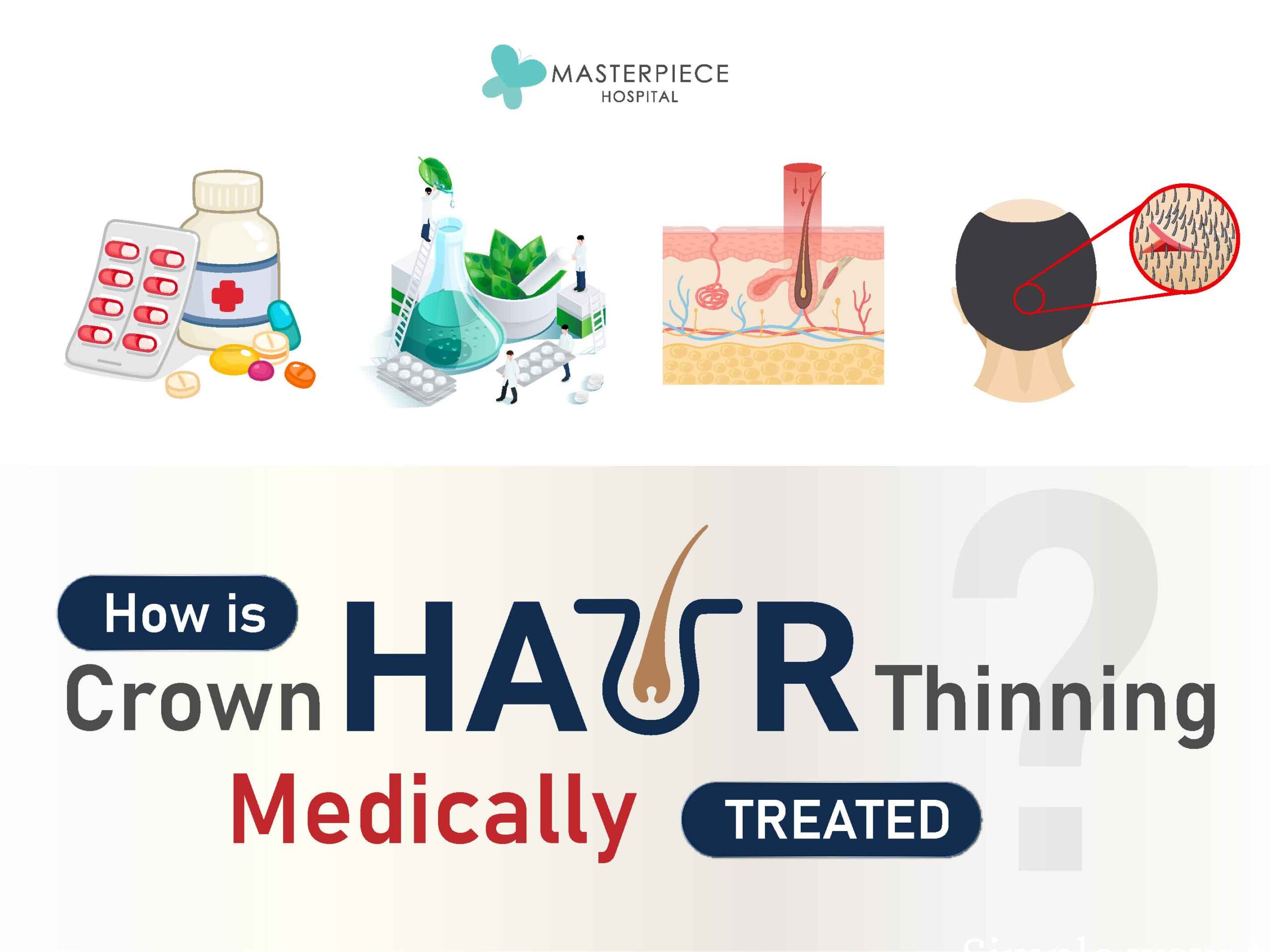
Hair thinning and baldness can be medically treated and potentially cured thanks to advanced technologies and diverse treatment methods, which consistently satisfy patients.
However, a key factor in successful treatment is the expertise and experience of the doctor. A skilled physician can accurately assess and analyze the problem, giving patients confidence that they will see real results.
Medical treatment options for baldness include:
- Medication
Medications can temporarily stop hair loss or prevent baldness. However, patients must take medicine daily and continuously. There are potential side effects if used improperly, so it’s important to follow a doctor’s advice before starting any medication.
- Alternative Treatments
These are initial treatments similar to medications, but may be preferable for patients who fear side effects or have allergies. Popular techniques include PRP (Platelet-Rich Plasma) therapy and stem cell injections into the scalp.
- Laser Hair Therapy
Laser treatment is a popular option due to its safety and low side effects. There’s a misconception that laser therapy harms the brain, but low-energy lasers used cannot penetrate the skin deeply and are completely safe.
- Hair Transplant Surgery
Hair transplantation is globally recognized as a permanent solution with long-lasting results that can effectively resolve crown hair thinning or baldness. It’s the most favored option among patients, but should be performed only by experienced specialists. Inexperienced doctors can cause complications such as scalp infections, scarring, or uneven hair growth.
How is treating hair thinning at Masterpiece Hospital beneficial?

Where to treat crown hair thinning? This is probably the question most people want an answer to because the problem of hair loss, hair thinning, or baldness can have several negative effects both on health and mental well-being, causing many people to lose their confidence countless times. In this article, 3M Hair Transplant at Masterpiece Hospital will help answer the question of where patients should decide to get a hair transplant and what factors should be considered as follows:
- Experienced doctors
What patients should be aware of before deciding to undergo treatment is that doctors must have a legally valid medical license, as well as expertise and specific experience. This is one of the first things to consider so that the results meet the patient’s satisfaction.
- Medical facility
Hospitals or clinics must be clean and well-ventilated in every area to build confidence for every patient who uses the service. The facility must also have a real, verifiable location, a legal business license, and provide conveniences for patients, such as a reception area and parking that can accommodate a large number of people, which will create a sense that the facility meets standards and is trustworthy.
- Medical equipment
Medical tools or equipment must be clean, sterilized, safe, and ready for use in all situations. The technology must also be modern to fully support the diversity of patients. This will become another helper when deciding to use the service.
- Reviews
Reviews from hospitals or various social media platforms can help guarantee the skill level of the doctors because reviews help build the credibility of the hospital and the doctors as well. However, these advertisements have caused the current online competition to rise significantly, which may lead to the distortion of facts to attract customers. Therefore, when looking at reviews, you shouldn’t rely only on still photos. Deciding based on video clips is also a good idea because real-time video filming cannot be edited immediately.
Which hair transplant techniques are suitable for treating crown hair thinning?
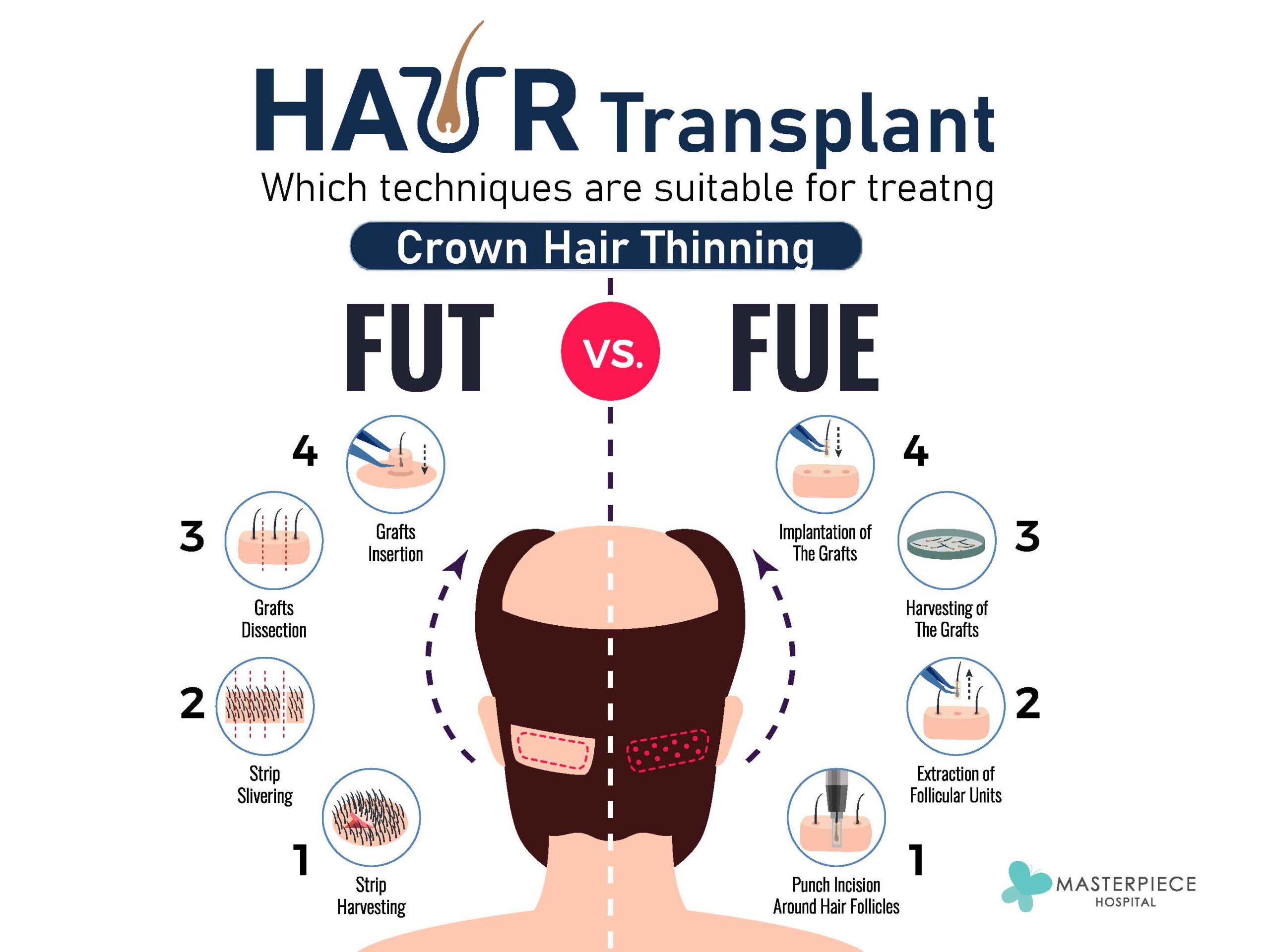
For patients looking to undergo a hair transplant to treat crown hair thinning, there are two primary techniques commonly used by doctors. The appropriate method depends on the individual’s condition, and the doctor will assess which one is more suitable. Let’s take a closer look at both techniques:
- FUT Hair Transplant Technique
With the FUT technique, the doctor removes a strip of scalp containing hair follicles and then separates it into individual grafts using a high-powered microscope before implanting them in the targeted area.
The advantage of this method is its high graft survival rate due to the precision of microscopic dissection, which minimizes damage. However, it may leave a linear scar on the back of the head, making it less ideal for patients who wear their hair short, as the scar could be noticeable.
- FUE Hair Transplant Technique
The FUE technique is very popular today because it doesn’t leave a visible scar. Hair follicles are extracted individually from the back of the scalp using a motorized punch, resulting in tiny wounds that are nearly undetectable.
However, this method comes with limitations. To put it simply, if performed by an inexperienced doctor or with improper use of the punch tool, the chance of successful graft survival drops significantly. Instead of gaining viable grafts, the follicles might be damaged. Therefore, patients should thoroughly research before making a decision.
Ultimately, both techniques aim for the same result: achieving fuller hair and permanently resolving crown hair thinning. The key factor in determining the success of either method is the expertise of the doctor. A skilled doctor can thoroughly assess the patient’s hair and scalp condition, accurately plan graft placement, and minimize potential surgical risks.
Article by

Masterpiece Hospital: Masterpiece Hospital: We are Thailand and Asia’s leading aesthetic surgery hospital. As experienced professionals, we’re committed to providing accurate and comprehensive information about aesthetic surgical services. At Masterpiece Hospital, we care for you from consultation through post-operative recovery. Our highly experienced medical team delivers full-service care using the latest technology, all under medical standards accredited by the international healthcare certification AACI.
Hospital Contact Information: Located at: 99/19 Sukhothai Road, Dusit Subdistrict, Dusit District, Bangkok 10300
